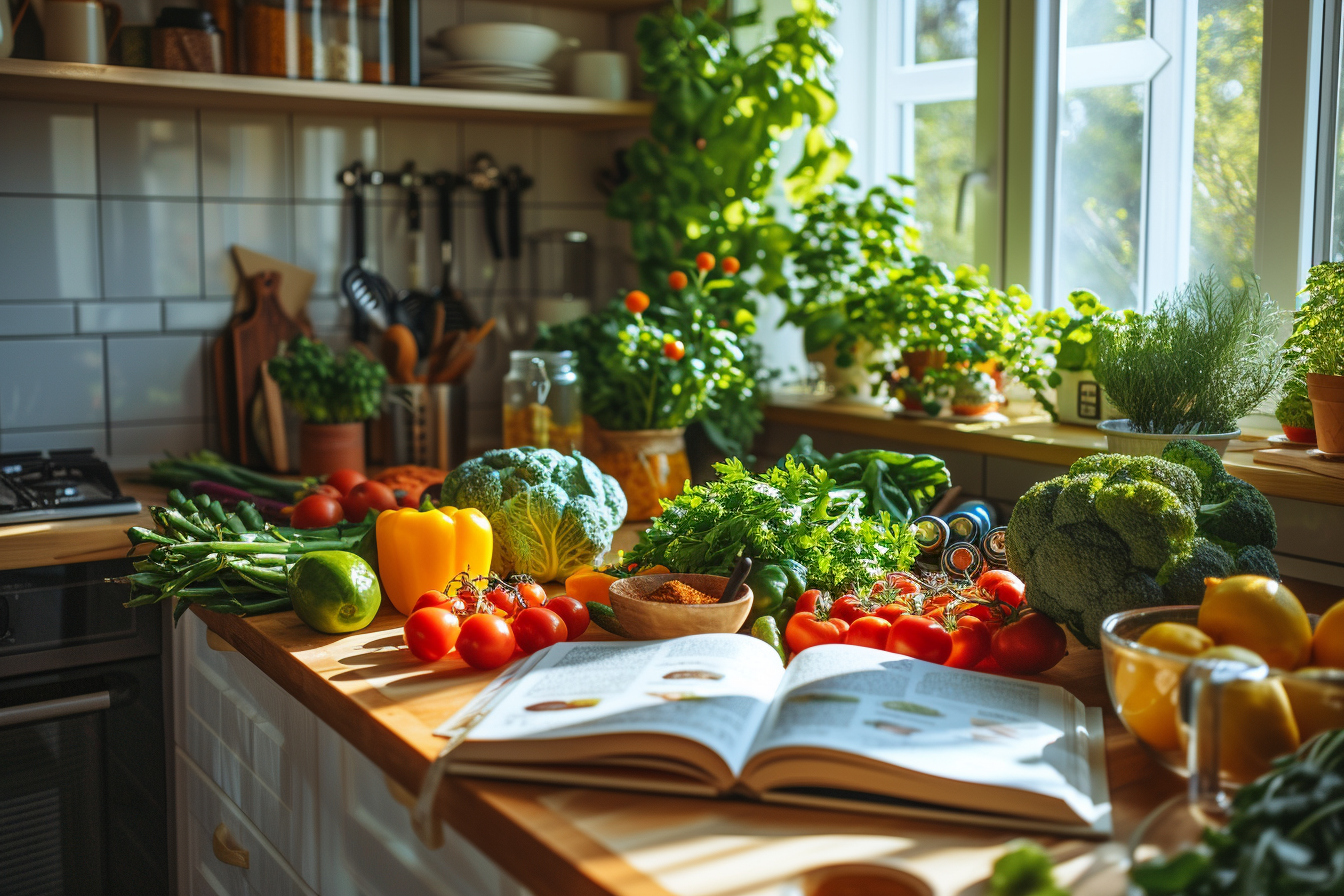Embracing a vegan lifestyle brings forth a mosaic of culinary challenges and rewards. The quest for quick, nutritious, and flavorful meals leads many to refine their kitchen practices. Whether you’re a seasoned vegan chef or new to the plant-based realm, equipping yourself with the right cooking tips can significantly enhance your dining experience. This article navigates through the intricacies of vegan cooking, offering strategies to simplify and elevate your plant-based meal preparation.
Understanding vegan cooking fundamentals
Before delving into quick tips, familiarize yourself with the core principles of vegan cooking. At its heart, vegan cuisine revolves around fruits, vegetables, legumes, grains, nuts, and seeds. Mastering the preparation of these staples is the first step to seamless vegan cooking.
Keep a well-stocked pantry
A diverse pantry is your ace in vegan culinary adventures. Stock ample amounts of grains like quinoa, brown rice, and oats. Beans, lentils, and chickpeas offer plant-based proteins and versatility. Nuts and seeds, along with their butters, contribute rich flavors and textures. For timely meal prep, consider canned or pre-cooked versions of legumes and vegetables.
Fortify with flavor
The absence of meat and dairy doesn’t equate to lackluster meals. Herbs, spices, nutritional yeast, vinegars, and various plant-based sauces invigorate dishes with robust dimensions. Incorporate flavors from around the world to keep your palate engaged.
Streamlining your cooking process
Efficiency is key in the kitchen. Vegan cooking need not be time-consuming with a few strategic approaches under your belt.
Meal prep magic
Allocate a portion of your week to prepare ingredients in bulk. Cook grains and legumes ahead of time. Chop an array of vegetables and store them properly. Create dressings and sauces to refrigerate for easy access. These steps cut down on daily cooking time.
Utilize kitchen gadgets
Embrace the convenience of modern kitchen appliances. Food processors and blenders expedite tasks like chopping and pureeing. Slow cookers and pressure cookers, such as the beloved Instant Pot, are invaluable for hands-off cooking of grains and legumes.
Flash freezing benefits
Don’t overlook your freezer as an ally. Flash freeze single layers of prepared fruits, veggies, or cooked patties on a baking sheet before transferring them to a storage container. This technique prevents clumping and allows you to use only what you need, minimizing waste.
Plant-Based proteins at their peak
Protein is an essential macronutrient that’s readily available in the vegan diet if you know where to look.
Tofu, tempeh, and seitan
Learn to cook tofu, tempeh, and seitan in various ways. Pressing tofu extracts excess water and yields a better texture after cooking. Marinate these proteins to infuse flavors before grilling, baking, or stir-frying.
Legume love
Beans and lentils morph into everything from hearty stews to plant-based burgers. Pair different legumes with grains to form complete proteins packed with all nine essential amino acids.
Maximizing nutrients in plant-based dishes
Nutrient density is paramount in vegan cooking. Combining ingredients wisely not only heightens flavor but also nutritional content.
Raw and cooked balance
Some nutrients thrive under heat, while others are best preserved in raw form. A mix of cooked and fresh produce in your diet ensures you’re getting a broad spectrum of vitamins and minerals.
Pairing for nutrient absorption
Certain nutrient combinations enhance absorption. Pair iron-rich foods like spinach with vitamin C sources like bell peppers for improved iron uptake. Include healthy fats with carotenoid-rich vegetables to boost the availability of these antioxidants.
Expediting vegan baking

Baking without eggs and dairy appears daunting initially, but a few tweaks make for seamless transitions.
Egg replacements
Various vegan ingredients mimic the binding properties of eggs. Mashed bananas, applesauce, flax, or chia seeds mixed with water can step in for eggs. Commercial egg replacers are also efficient in certain recipes, ranging from cakes to cookies.
Dairy substitutes
Plant-based milks and butters are nearly direct substitutes for their dairy counterparts. Soy and almond milk maintain similar consistencies to cow’s milk. Vegan butter or coconut oil can replace butter in most recipes.
Simplifying snacks and sides
Don’t underestimate the simplicity and satisfaction of quick vegan snacks and sides.
Vegetable chips
Kale, beets, and sweet potatoes transform into nutritious chips when baked with a light drizzle of oil and a sprinkle of salt. These make for convenient snacking or garnishes.
Dips and spreads
Whip up hummus, guacamole, or nut-based cheese spreads for a tasty complement to vegetable sticks or whole grain crackers. These sides double as flavorsome sandwich fillings.
Final thought nuggets
The efficiency of your vegan kitchen relies on several factors but ultimately roots in preparation and creativity. By optimizing your pantry, embracing meal prep, and leveraging kitchen tools, vegan cooking becomes less daunting and more enjoyable. Never undervalue the power of seasoning and combining foods for optimal nutrient intake. Baking vegan treats can be straightforward with clever replacements. And, always remember that simple snacks and sides often save the day. As you continue to explore and innovate within your plant-based kitchen, the journey is sure to be as gratifying as the meals you create. The road to a streamlined vegan kitchen is paved with curiosity, experimentation, and a dash of organization.

Leave a Reply